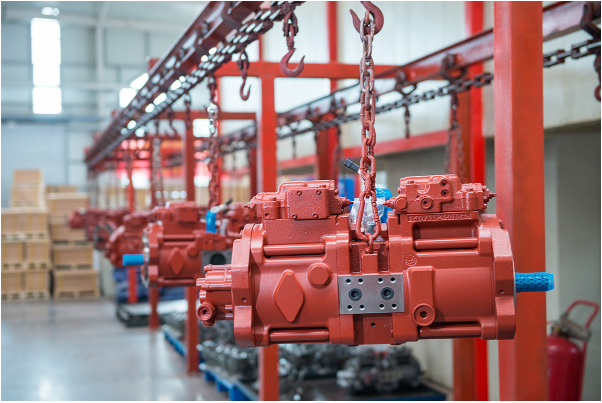A hydraulic motor is used to refer to an energy conversion device that outputs rotary motion and converts the hydraulic energy provided by the hydraulic pump into mechanical energy.
From the point of view of energy conversion, the hydraulic pump and the hydraulic motor are reversible hydraulic components. Inputting working fluid to any hydraulic pump can make it work as a hydraulic motor; When the torque is driven to rotate, it can also become a hydraulic pump working condition. Because they have the same basic structural elements - a closed and cyclically variable volume and a corresponding oil distribution mechanism.
However, due to the different working conditions of hydraulic motors and hydraulic pumps, their performance requirements are also different, so there are still many differences between hydraulic motors and hydraulic pumps of the same type. First of all, the hydraulic motor should be able to forward and reverse, so its internal structure is required to be symmetrical; the speed range of the hydraulic motor needs to be large enough, especially for its minimum stable speed. Therefore, it usually adopts rolling bearings or hydrostatic sliding bearings; secondly, the hydraulic motor does not need to have self-priming ability because it works under the condition of input pressure oil, but it needs a certain initial sealing to provide the necessary starting torque. Due to these differences, the hydraulic motor and the hydraulic pump are similar in structure, but cannot work reversibly.
Hydraulic motors can be divided into gear type, vane type, plunger type and other types according to their knot types. According to the rated speed of the hydraulic motor, it is divided into two categories: high speed and low speed. The rated speed higher than 500r/min belongs to the high-speed hydraulic motor, and the rated speed lower than 500r/min belongs to the low-speed hydraulic motor. The basic types of high-speed hydraulic motors are gear type, screw type, vane type and axial piston type. Their main features are high speed, small moment of inertia, easy to start and brake, and high sensitivity of adjustment (speed regulation and reversing). Usually, the output torque of high-speed hydraulic motor is not large, so it is also called high-speed small torque hydraulic motor. The basic type of low-speed hydraulic motor is radial piston type. In addition, there are also low-speed structural types in axial piston type, vane type and gear type. The main characteristics of low-speed hydraulic motors are large displacement, large volume and low speed (sometimes It can reach a few revolutions per minute or even a few tenths of a minute), so it can be directly connected to the working mechanism without a reduction device, which greatly simplifies the transmission mechanism. Usually, the low-speed hydraulic motor has a large output torque, so it is also called low-speed large torque. hydraulic motor.
